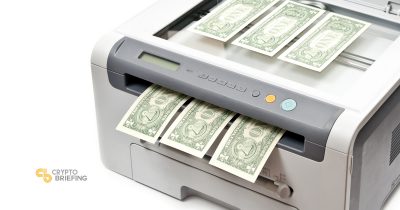How Inflationary Should Cryptocurrency Really Be?

Share this article
The next time you find yourself in an argument about the merits of cryptocurrency, set your timer and count down the minutes until you hear something like the following: “Fiat money has value because it’s backed by the government. Bitcoin isn’t backed by anything.” Odds are ten to one this will be sandwiched somewhere between mentions of energy usage and drug dealers.
The truth is that Bitcoin owes its existence to government-backed currencies, in the same way that vaccines owe their existence to smallpox. We have already seen the value of government-backed fiat and monetary policy, especially in Argentina, Brazil, and Cyprus, to go no further than the letter C. Needless to say, the objections tend to run out by the time you get to V or Z. If money is as stable as the government that issues it, then most fiat currencies have a very dim future indeed.
While most of us haven’t experienced the terror of a plunge into hyperinflation (with everything that means for a savings account), that hasn’t stopped politicians from peeping over the edge. “Quantitative Easing”—the official euphemism for Xerox-based monetary policies—brought us perilously close during the 2008 crisis.
When Bitcoin was introduced, it immediately attracted a following from the gold fringes of the libertarian movement. In certain circles it was considered like a digital gold standard, free of political meddling and inflation-as-policy. Satoshi seems to have modelled Bitcoin’s emission rates on gold production, and it would be no surprise if we learned that the founder of Bitcoin was something of a goldbug herself.
Bitcoin and the Trouble with Deflation
But “electronic gold” is not quite living up to its expectations, and the lack of inflation plays a major part. At present, Bitcoins are ‘minted’ at an annual rate of about 3.92 percent. This would be considered somewhat inflationary if that figure were not dwarfed by the number of new investors, whose demand causes consistent spikes and turns Bitcoin into one of the most deflationary of currencies.
Paradoxically, Bitcoin’s steep appreciation is a roadblock for mass adoption. The unofficial motto of the crypto community is to “Hodl” and wait for higher prices. No one wants to spend bitcoins if they think prices are going up, and that hodling hasn’t helped gain acceptance. The opposite of Hodl isn’t “sell,” it’s “spend”—and the lack of spending is part of the reason why Bitcoin is still struggling for mass adoption.
Mixed Currencies
Most mainstream economists agree that a little inflation is ideal—the real problem is when governments start solving their money problems by printing a lot more of it. Milton Friedman, an economist with few sympathies for government overreach, suggested a novel approach to the money supply—taking it out of human hands. “Suppose the Federal Reserve said it was going to increase the quantity of money by 4 percent a year,” he said in 2006. “That would be a purely mechanical project. You could program a computer to do that.”
As far as we know, the Fed has not programmed an algorithm to control the money supply, but several cryptocurrencies have. While most have followed Bitcoin’s deflationary model, there have been other experiments.
Dogecoin, for example, is a great demonstration of the benefits (and shortcomings) of an inflationary currency. Shibes multiply at around 5% per year.
Other coins have made more elaborate experiments. We’ve previously reported on PIVX, but Peercoin did something similar. Both coins use a complicated staking system that increases the money supply when people are hodling and burns transaction fees when they are spending—effectively narrowing to a low but nonzero increase.
Fixed Supply & DPOS coins
Among new arrivals, the latest fashion seems to be doing away with mining and staking altogether. Most of these coins use delegated proof-of-stake systems, like Tronix and Cardano, but it also extends to non-staking ecosystems like Ripple, and Stellar Lumens.
The advantage of an “instamine” is to put off problems of monetary supply, while also providing enough reserves for the founders to bootstrap the new currency. Ripple, for example, was created in a single 100 billion XRP batch, giving the founders plenty of capital for important uses like partying with Snoop. Sometimes these are the only coins that will ever be produced; in others there are ways to establish consensus for new coins.
The latter conditions seem ominous, if money supply is to again become a political issue. A recently-discovered chat log exposed the internal debates among EOS validators on how to address a budgeting shortfall. In order to solve the question, the validators voted on the question: “Should we ‘print’ 19k EOS or ‘work out’ a solution”? The validators voted 55 to 31 in favor of “printing.”
EOS is not intended to be a currency in the same sense that Bitcoin is, so it’s a bit more understandable when they resort to the photocopier. But, if cryptocurrency emission is to become a private affair between human delegates, we may find ourselves stuck in the same problems Satoshi started out with.
The author is invested in Bitcoin, Ripple, Stellar and Cardano, which are mentioned here.
Share this article
